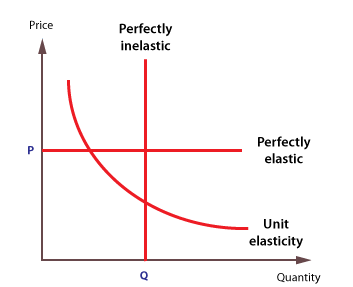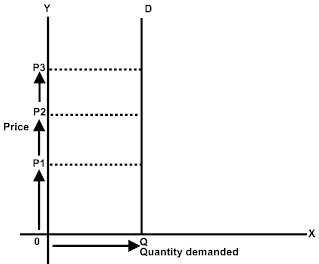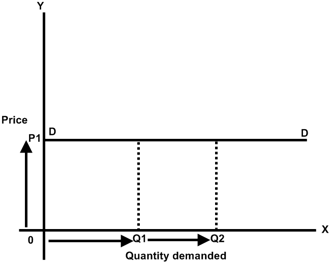Option Price Calculator Free Download
I know what you woke up thinking this morning: "I sure could use a quick refresher on price elasticity." If you're shaking your head saying, "Yes, Meg. Yes!" then I'm so happy to have met your needs with this miraculous piece. Understanding the price elasticity of your product or service and how it impacts your sales and business strategy is crucial to building a responsive, successful company. It goes a step or two beyond identifying the going rate for your offer and is a more strategic approach to pricing. Brush up on the basic economics of price elasticity below and, don't worry, you can thank me later. Learn about price elasticity of demand. Learn about price elasticity of supply. Learn about cross price elasticity. Before we break things down, let's begin by level setting on price elasticity in general. Price elasticity measures how sensitive the demand and supply of your product is to changes in price. For example, the price elasticity of demand measures many customers will continue to purchase your product or service if you increase the price. Price elasticity can fall into one of three buckets. Bucket one is price elastic, where changes in price greatly affect the supply or demand of a product or service. Bucket two is price inelastic, where supply and demand will work inversely (a.k.a. in the opposite direction) to changes in price. The third bucket is price unit elastic, where a change in price is proportional to the change in supply and demand and they move at the same rate. The way to calculate price elasticity is to divide the change in demand (or supply) by the change in price. This will tell you which bucket your product falls into. To illustrate these economics, here's a chart that shows all three buckets: Image Source So, what can you do with this information? Great question. Price elasticity gives you some useful information for how to best price your products and services. If you have an elastic product, then you should be cautious about raising prices since a price increase will greatly impact purchases (demand) and production (supply). If, on the other hand, you have a price inelastic product, then you can adjust your prices with less caution since you know that the change will have a smaller impact on supply and demand. Now that we've covered how price elasticity impacts your business, let's break things down even further. This formula (also known as PED) is used to identify how a change in price affects the supply or demand of a commodity. If people still buy a product/service when the price is raised, that product/service is inelastic. A product/service is elastic when demand suffers due to price fluctuations. For example, research shows that raising cigarette prices doesn't do much to stop smokers from buying cigarettes, therefore making cigarettes an inelastic commodity. Cable television, however, is a very elastic product. As the price of cable has increased, demand has decreased as more consumers "cut the cord." Substitutions like Netflix, Hulu, and other streaming services have made the cable industry elastic. There are also substitutions for Tobacco (i.e., vaporizers, nicotine patches, etc.), but none that have affected their core consumer's desire and ability to continue buying cigarettes. % Change in Quantity / % Change in Price = Price Elasticity of Demand If you sell 10,000 reams of paper at $100/ream and then raise the price to $150 per ream and sell 7,000 reams, your elasticity of demand would be -0.88. This would be considered inelastic because it is less than one. Broken down even further to include the calculation of percent change, this formula looks like: ((QN - QI) / (QN + QI) / 2) / ((PN - PI) / (PN + PI) / 2) Our numbers plugged into this formula would be: (7,000 - 10,000) / (7,000 +10,000) /2) / (150 - 100) / (150 - 100) / 2) Head spinning? Check out this free calculator. This formula is helpful in determining if a product/service is price sensitive. Ideally, you want your offering to be a must-have (inelastic) that consumers consider non-negotiable during price fluctuation, not a nice-to-have (elastic). If your PED equals 0, price changes do not affect your product's demand. Generally speaking, only absolutely essential items and services have perfectly inelastic demand. For instance, if there were a life-saving drug on the market that people would pay any price to obtain, demand would remain the same no matter how much the price might rise. If the percent change for demand is less than the percent change of the product's price. Necessary goods and services that people would be willing to pay more for in most cases have relatively elastic demand. This often includes goods with no close substitutes like electricity. There's no real alternative to electricity, so people would generally be willing to pay more for it as the price increases. It's not quite as pressing or essential as a life-saving drug, so demand wouldn't be perfectly inelastic. If the change in demand yields a proportional change in price. Imagine you're selling headphones. If demand for your headphones is unit elastic and you raise the price 10%, you will see a 10% decrease in demand. If demand change is greater than the change in your product's price. Here, a relatively small change in price will make for a very large change in demand. For instance, in the case of airline travel, a small change in flight prices will often make a large base of consumers hold off on taking a vacation or look into other modes of travel. If demand falls to zero at the slightest price increase or demand becomes great with a slight price decrease. Perfectly elastic demand demonstrates that the demand for a product is 100% directly tied to its price. Say there are two apple farmers competing in the same local market. One of the farmers sells their apples for $2.00 per apple, but the other one starts selling their apples for $1.50. If the entire market starts buying the $1.50 apples exclusively, that would mean demand is absolutely tied to price. And that demand for apples would be perfectly elastic. Image Source The price elasticity of supply (PES) measures how responsive the supply of a product/service is when there is a change in price. If supply is inelastic, it might mean a company is struggling to keep up with demand because they are short-staffed, need longer lead time to produce more of their product, or do not have the resources to expand their facilities. If supply is elastic, a company might have a surplus of staff or laborers available to increase supply. Knowing PES allows businesses to determine whether a change in price will negatively or positively affect the demand for their product/service. Price Elasticity of Supply = % change of supply / % change in price If supply is inelastic, an increase in price leads to a change in supply that is less than the increase in price, meaning the PES is less than one. If supply is elastic, the price change yields a larger increase in supply making the PES greater than one. For example, if the price of "World's Greatest Boss" mugs falls 10% and the supply falls 5%, the PES is .5 and considered inelastic. If the price of bobbleheads increases by 15% and supply increases by 20%, the price elasticity of supply (PES) is 1.3 and elastic. Cross elasticity of demand measures how responsive the demand of a product/service is when the price for another product/service changes. For example, if Hulu with Live TV raises their prices to $45 per month, will customers leave the service for YouTube TV — a similar streaming service charging only $40 per month? As the price of Hulu Live rises the demand for their competitor's service rises. Within cross price elasticity, YouTube would be considered a "substitute good." If, however, the cost of televisions increased and the number of customers using subscription services like Hulu or YouTube decreased because of the price increase of televisions, this would be called "complementary goods." Cross price elasticity allows businesses to price their products/services competitively, plan for risks, and map their market. If your product/service has no real competitor, you do not need to consider cross price elasticity because there is no substitute for your offering. However, if a complementary product/service sees a market fluctuation, you might need to prepare for cross price elasticity. Cross Price Elasticity of Demand = % change in quantity demanded for Product A / % change Product B's price Want to dig into pricing strategy a bit more? Check out this article on cost-plus pricing or this one on prestige pricing for your premium offers. Editor's note: This post was originally published in April 3, 2019 and has been updated for comprehensiveness. 
How to Calculate Price Elasticity

Price Elasticity of Demand
Price Elasticity of Demand Formula
Types of price elasticity of demand
1. Perfectly Inelastic Demand
 Image Source
Image Source 2. Relatively Inelastic Demand
3. Unit Elastic Demand
4. Relatively Elastic Demand
5. Perfectly Elastic Demand

Price Elasticity of Supply
Price Elasticity of Supply Formula
Cross Price Elasticity
Cross price elasticity formula


Originally published Aug 6, 2021 8:00:00 AM, updated August 06 2021
Source: https://blog.hubspot.com/sales/price-elasticity
Posted by: latishawaltersheide0189939.blogspot.com